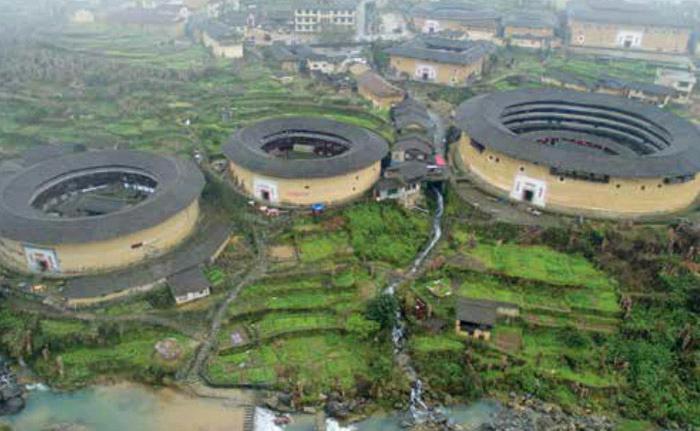Fujian Tulou
Listed as a World Cultural Heritage Site in 2008 Location: Fujian Province, southeast China Best Time to Visit: Anytime
FujIAn Tulou is a property of 46 buildings constructed between the 15th century and the 20th century in the southwest of Chinas Fujian Province. Set amongst rice, tea and tobacco fields, the Tulou are earthen houses. Several stories high, they are built along an inwardlooking, circular or square floor plan as housing for up to 800 people each.
They were built for defense purposes around a central open courtyard with only one entrance and windows to the outside only above the first floor. Housing a whole clan, the houses functioned as village units and were known as “a little kingdom for the family” or “bustling small city.”
They feature tall fortified mud walls capped by tiled roofs with wide over-hanging eaves. The most elaborate structures date back to the 17th and 18th centuries. The buildings were divided vertically between families with each disposing of two or three rooms on each floor. In contrast with their plain exterior, the inside of the Tulou were built for comfort and were often elaborately decorated.
They are described as exceptional examples of traditional and functional housing, exemplifying a particular type of communal living and defensive organization, and in terms of their harmonious relationship with their environment, an outstanding example of human settlement.
The legal protection of the nominated areas and their buffer zones are adequate. The overall management system for the property is adequate, involving both government administrative bodies and local communities, although plans for the sustainability of the landscape that respect local farming and forestry traditions need to be better developed.

